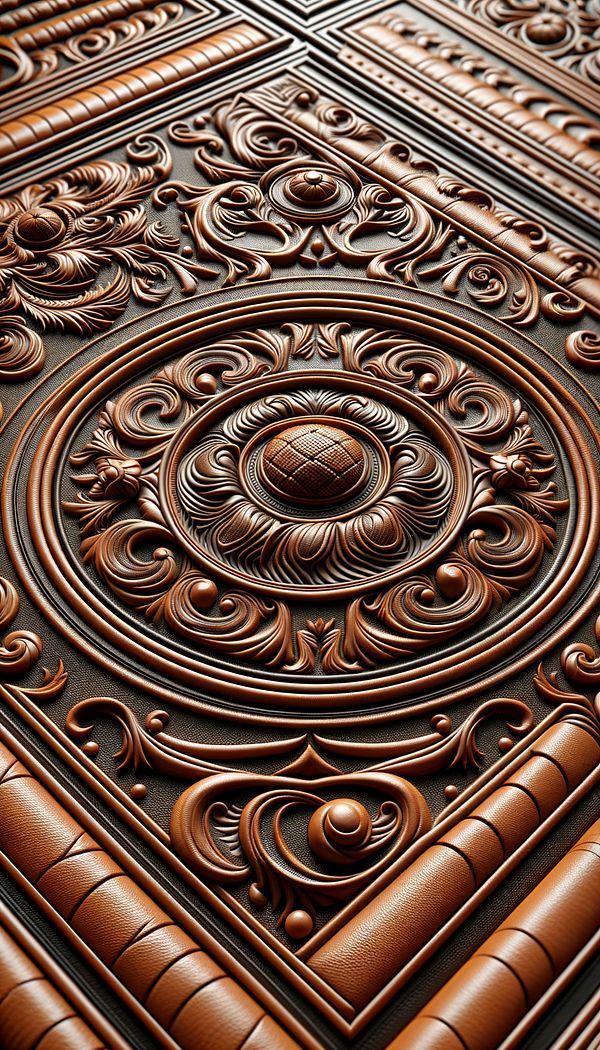What is Embossed?
Embossed refers to a surface decorated with a raised or recessed design.
Description
Embossed designs add a unique texture and visual interest to various surfaces, making them standout elements within interior design. The process of embossing can be applied to a wide array of materials, including paper, leather, metal, and fabric, giving designers and homeowners alike the flexibility to introduce intricate patterns or simple motifs into their spaces. Depending on the material and the depth of the design, embossing can range from subtle textures that play with light and shadow, to more pronounced, tactile patterns that invite touch.
The technique can be found in everything from wall coverings and textiles to furniture and decorative pieces. Embossed designs can evoke a sense of luxury and craftsmanship, especially when applied to high-quality materials. Moreover, embossing can blend seamlessly into a variety of design styles, from traditional to contemporary, by imparting depth and character to otherwise flat surfaces.
Usage
In the world of interior design, embossed surfaces are often used to add a touch of sophistication to spaces. For example, embossed wallpapers can create an elegant backdrop for a dining room, while embossed leather panels might adorn the headboard of a luxurious bedroom. Additionally, embossed metal accents can provide a rich, decorative element to furniture or lighting fixtures.
FAQs
-
Can embossing be applied to any material?
Embossing can be applied to a wide range of materials, including paper, leather, metal, and fabric. However, the feasibility and final effect depend on the material's characteristics and the design's complexity.
-
Is embossed decor suitable for all design styles?
Yes, embossed decor can complement various design styles, ranging from traditional to contemporary. The key is selecting patterns and materials that harmonize with the overall design theme.
-
How do you maintain embossed surfaces?
Maintenance of embossed surfaces depends on the material. Generally, dusting with a soft cloth and occasional cleaning with appropriate cleaners for the material will suffice. For more intricate embossed designs, gentle care is necessary to avoid damage.
Practical Application
When incorporating embossed elements into your space, consider the scale and detail of the embossed pattern in relation to the room's size and existing decor. For a cohesive look, choose embossed designs that complement the textures and colors of other design elements in the space. Starting with a single embossed accent piece can be a beautiful way to introduce texture without overwhelming the design.
-
Furniture Types599 articles
-
Decorative Techniques322 articles
-
Decorative Objects240 articles
-
Materials & Textiles360 articles
-
Wall Treatments & Finishes157 articles
-
Louis XIIILouis XIII is a style of interior design and architecture originating in France during the reign of King Louis XIII.
-
Hand DistressingHand distressing is a decorative technique used to give new furniture or materials an aged or weathered appearance.
-
SpandrelA spandrel is the triangular space created between the outer curve of an arch and the framework enclosing it.
-
Blend Different StylesBlending different styles is the process of combining various interior design aesthetics to create a cohesive look.
-
FiguringFiguring refers to the natural patterns and markings found in wood.
